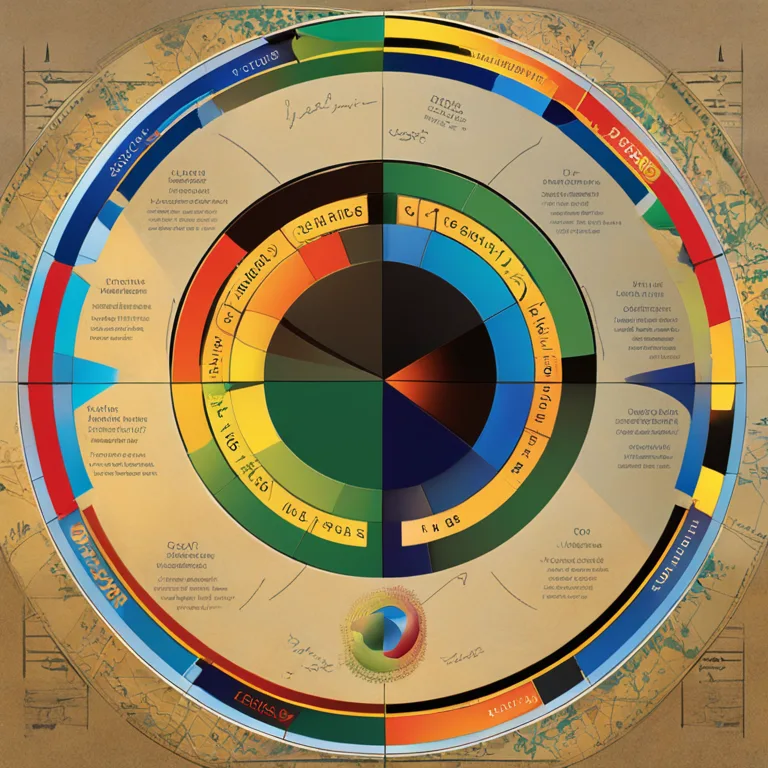
The Science & Biorhythms
Delving into the principles on which biorhythms are founded, this article sheds light on their origin and implications for human life.
article by Adrian Wallace
The Concept of Biorhythms
Understanding biorhythms starts with the basic premise that human life exhibits cyclic patterns of physical, emotional, and intellectual states. The theory suggests that from the moment of birth, individuals commence a series of rhythmic cycles that influence various aspects of health, mood, and cognitive capabilities. Originating in the 19th century, with the first formal theory being proposed by Dr. Wilhelm Fliess, the study of biorhythms has evolved to encompass a more holistic approach to syncing life choices with these intrinsic cycles.

The Three Core Cycles
Biorhythms are primarily based on three core cycles: the physical, emotional, and intellectual. These cycles last for 23, 28, and 33 days respectively, and each has its unique impact. The physical cycle influences vitality, strength, and overall wellness. The emotional cycle shapes mood, creativity, and sentiment, while the intellectual cycle governs analytical thinking, learning, and decision-making processes. Understanding these cycles is paramount for individuals aiming to optimize their daily activities in alignment with their biological rhythms.

Calculating Biorhythms
The calculation of an individual's biorhythms begins with the date of birth. Using this starting point, algorithms project the ups and downs of the three cycles, determining when a person may experience high or low phases in each area. With contemporary advancements in software and mobile applications, calculating one's biorhythms has become easily accessible, allowing users to forecast their peak and trough periods proactively.

Scientific and Skeptical Viewpoints
While biorhythms have been embraced by proponents of holistic wellness, the scientific community remains divided. Critics argue that peer-reviewed research providing empirical support for biorhythms is scarce, placing the concept more in the realm of pseudoscience. Nevertheless, many individuals report anecdotal evidence of their life experiences aligning with biorhythmic patterns, maintaining interest and belief in the concept.

Applications in Daily Life
Adherents of biorhythms often use their understanding of the cycles to make decisions about health, partnerships, and career moves. For instance, planning important meetings or events during an intellectual high, or engaging in demanding physical activities during a peak in the physical cycle, can purportedly yield better outcomes. Biorhythmic awareness is promoted as a tool for enhanced self-awareness and personal development.
Technological Advancements and Biorhythms
Technology plays a critical role in the modern-day application of biorhythms. With the advance of wearable technology and AI-driven analytics, tracking and interpreting biorhythmic data has become more sophisticated. Users can receive tailored insights and recommendations based on their cycles, further integrating biorhythmic awareness into lifestyle and health management in ways that were not possible before.
Final Thoughts
While the debate around the scientific validation of biorhythms continues, interest in them remains high. For those intrigued by the intersection of natural cycles and personal experience, biorhythms offer an intriguing framework for self-examination and life planning. As we move further into the 21st century, it is likely that the integration of technology will only deepen our exploration of this captivating concept.
Published: 12/28/2023
Modified: 12/28/2023
More predictions
Come back here soon to learn more about yourself and your future


Biorhythm Insights: Patterns of Life's Peaks and Valleys
Discover the intriguing concept of biorhythms and see practical examples of how these physiological cycles might influence our daily lives.


The Intricacies of Biorhythms: A Detailed Guide
Delve into the mechanics of biorhythms and how they influence our daily lives, with insights into their practical applications and relevance.


Biorhythm Compatibility and Birth Dates: The Connection Revealed
Discover how biorhythm compatibility based on birth dates can influence personal connections and relationship dynamics.